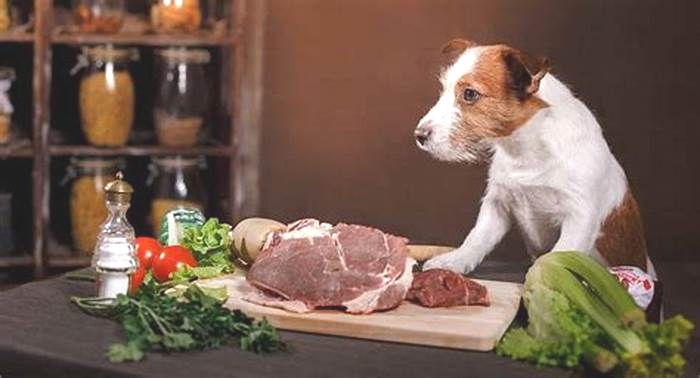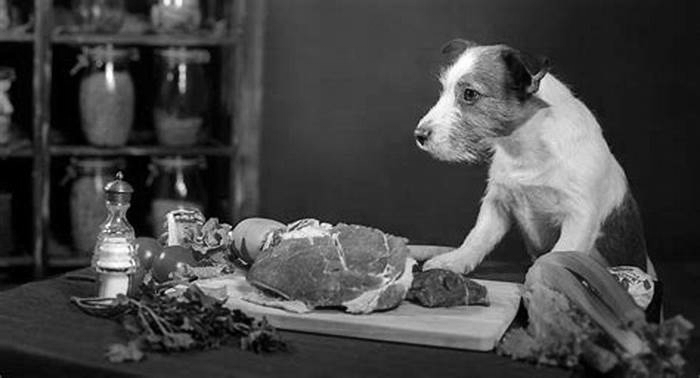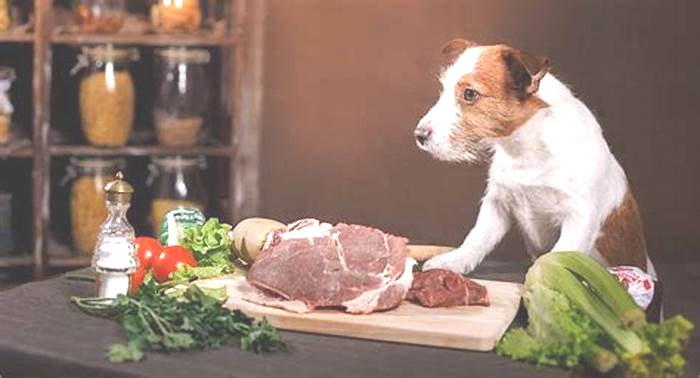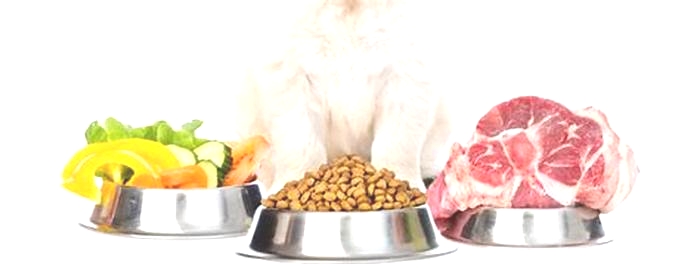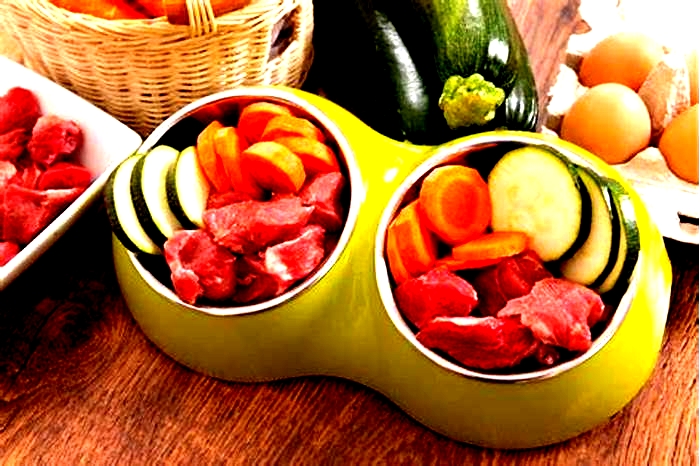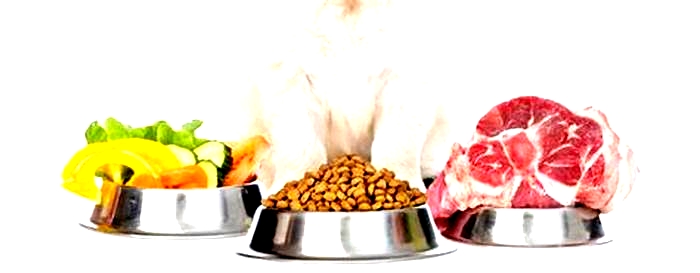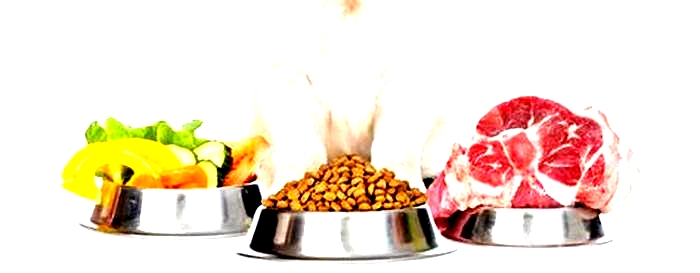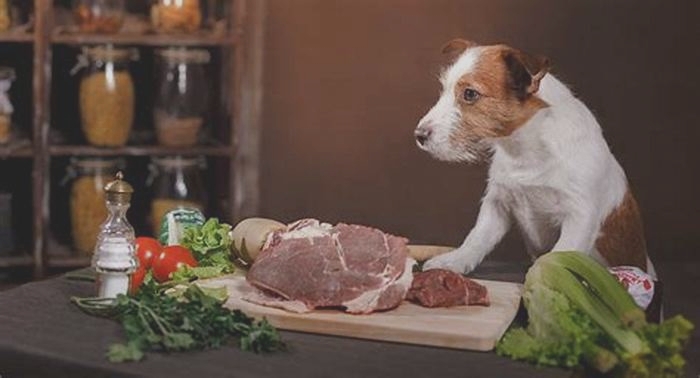Fresh and Fit Why Organic Diets Are Best for Your Dog s Health
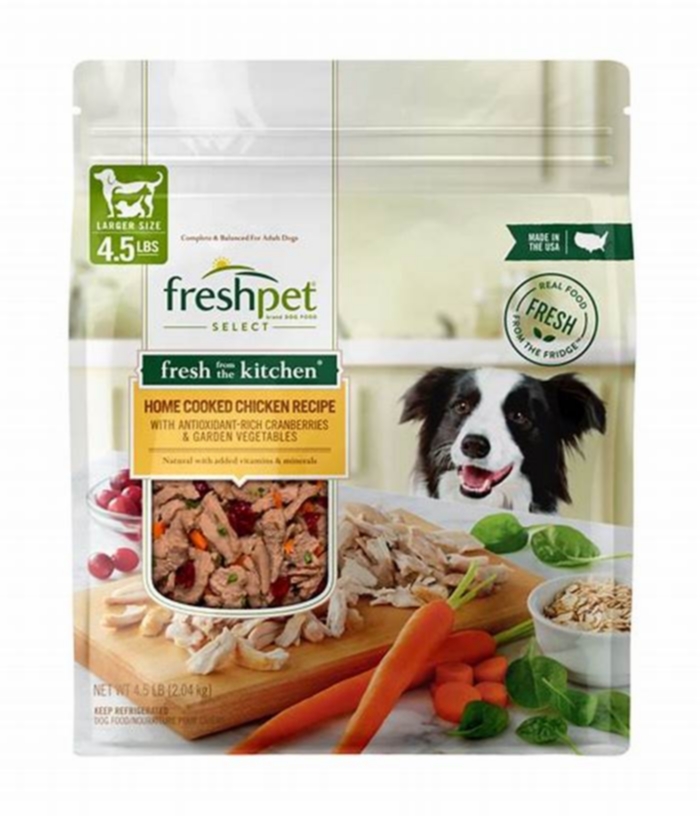
Raw Diet For Dogs: Will It Improve Your Dogs Health?
Raw dog food diets are controversial. While some think this is the way dogs were meant to eat before dogs became pets, others think dry dog food is the correct diet for our four-legged fur balls. Is raw food good for dogs? Lets dig into raw dog food diets a bit more so you can draw your own conclusion about whether this diet lives up to the hype.
What Is A Raw Food Diet For Dogs?
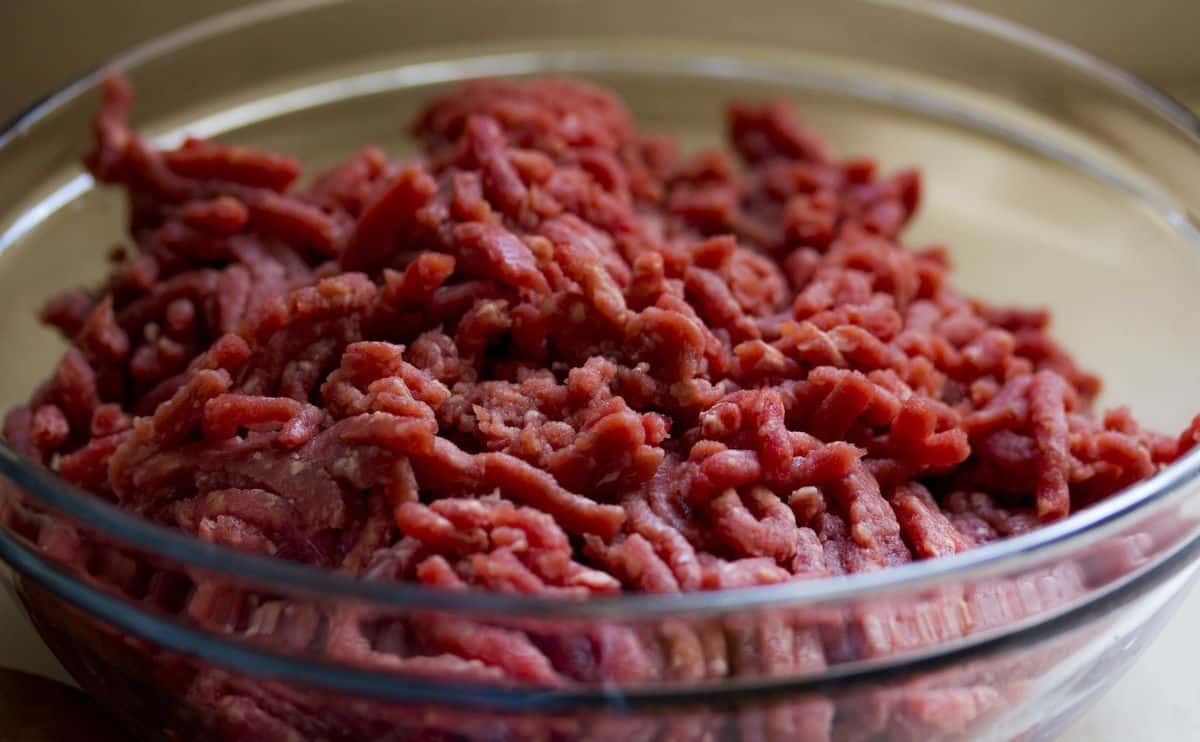
Araw dog food diet emphasizes uncooked meat (often muscle and organ meat), whole or crushed bones, fruits, vegetables, raw eggs, and some dairy.
The raw dog food diet started with racing Greyhounds and sled dogs. In 1993, Australian veterinarian Ian Billinghurst proposed extending the diet to family dogs. He called this the BARF diet for dogs, which stands for Bones and Raw Food or Biologically Appropriate Raw Food.
Billinghurst suggested dogs would flourishon BARF dog food since this is how they ate prior to being domesticated. He also argued that commercial pet foods were harmful to the health of dogs. However, many vets and the FDA disagree with Billinghursts views.
What Are The Claimed Benefits Of Raw Food Diets For Dogs?
Billinghurst and his supporters say the benefits include:
- Shinier coat
- Healthier skin
- Cleaner teeth
- More energy
- Smaller stool
Potential Risks Of Raw Diets
While there are potential upsides and some veterinarians may recommend it, theAmerican Veterinary Medical Association (AVMA)is not on board with BARF. Citing a number of studies, the AVMA discourages feeding raw food or undercooked animal proteins because they can contain potentially deadly pathogens and harmful bacteria like Salmonella and E. Coli that can sicken your pet and possibly be transmitted to humans. Yikes!
Other possible disadvantages of the raw diet for dogs include:
- Harmful bacteria in raw meat pose a threat to the dogs and human health.
- Giving whole meaty bones to dogs presents a risk of choking, broken teeth, or internal punctures (learn more aboutif dogs can eat bones).
- Nutritional deficiencies can occur from raw dog food diets if they are not properly balanced. Low calcium and phosphorus levels, as well as inadequate vitamins and low levels of EPA and DHA, are some nutritional deficiencies that can develop.
Transitioning Your Dog From Dry Food To Raw
Its important to remember thattransitioning your dog to a new dietis aslow process. Below is a rough schedule you can use for this dietary shift.
If you notice your dog isnt feeling well, you should go back a day in the transition plan and proceed at a slower pace. For example, if your dog struggles with 50% serving, shift back to 40% serving for another day or two before moving forward.
Another thing wed like to mention is that raw diets are only safe for dogs 12 weeks andolder.
- Day 1:Feed 75% of your current (old) food and mix in 25% of the raw food in each serving to start the adjustment period for clean digestion.
- Day 2:Adjust to feeding 60% of your old food and mix in 40% of the raw food in each serving.
- Day 3:Feed 50% of your old food, mixed with 50% of the raw food per serving.
- Day 4:Feed 40% of your old food, mixed with 60% of the raw food per serving.
- Day 5:Feed 25% of your old food, mixed with 75% of the raw food per serving.
- Day 6:Feed 90-100% of the raw food at this point, you should be very close to a clean digestive transition period.
Break the daily serving size into two meals per day: one in the morning and one in the evening.
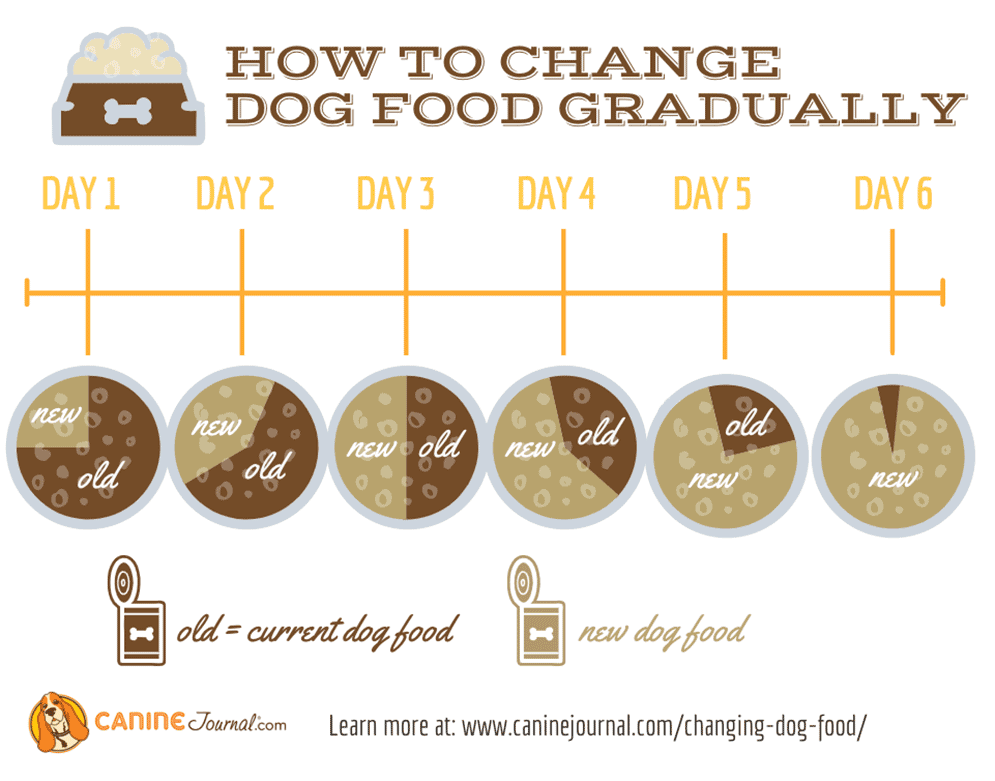
As a general rule, dogs on a raw food diet need to eat 2 to 5% of their body weight in raw food. You must be careful to ensure they get enough to eat, as many dogs drop a good amount of weight on a raw food diet. Maintaining a healthy body weight is a priority because you do not want your pup to lose too much weight too quickly.
Raw Dog Food Recipes
Want to get your dog started on a raw dog food diet? Here is a recipe you can try out using ground meat. We should note that the nutritional balance varies based on the breed and size of your dog, so talk to your vet about the best option for your pet. Or better yet, get one of the commercial pet food brands we recommend to ensure they get all the nutrients they need.
Ingredients
- 2 1/2 lbsground beef
- 4 ozchicken livers
- 1 carrot, chopped
- 1 small apple, cored
- 1/2 cup baby spinach
- 2 whole eggs (including shell)
- 1/2 cup plain yogurt
- 1 tbspground flaxseed
- 1 tbspolive oil
Note: It is critical that you use high-quality grade ground meat and understand that there are risks associated with consuming uncooked meat. In addition, there are severalfoods your dog should never eat,so plan your recipe accordingly.
Directions
- Put carrot, apple, and spinach in a food processor and process until finely chopped.
- Add remaining ingredients except for beef and process until well combined.
- Transfer the mixture to a large bowl and add the beef until well mixed.
- Form into patties the size of your palm and place on parchment lined baking sheet.
- Freeze patties and transfer them to a storage container to keep them frozen.
- The night before you wish to feed, remove the patties from the freezer and place them in the refrigerator to thaw.
Best Raw Dog Food Brands
Billinghursts book, Give Your Dog A Bone, has sparked commercially processed raw dog food diets to help pet parents who are short on time.
Shopping for ingredients, grinding, chopping, measuring, and mixing may not be something you have time for. Thats why these ready-made raw dog food delivery services can be so convenient for busy families who have an interest in feeding raw food to their pups.
Read our comparison of the best raw dog food delivery optionsand check out our rankings on the right. These food products are freeze-dried or frozen to maintain their nutrients and consist of meat, grains, vitamins, and vegetables.
Freeze-dried options can be convenient for traveling, but frozen is typically less processed than freeze-dried. So keep that in mind when youre purchasing raw food for your dog.
Some pet parents choose to serve these raw food packages on top of some kibble to help dogs adjust to a raw diet.
Video: How To Determine Serving Size
Wondering how much to feed your pup on a raw diet? Learn more in this video:
Myths About Raw Feeding Dogs
There are certainly risks and reservations with valid reasons behind them about raw feeding dogs. That said, there are also several myths and misconceptions that we can clear up.
- Raw feeding does not make dogs aggressive.
- Raw food will not automatically make your dog sick.
- The raw dog food diet is not only made up of raw meat.
- Dogs can eat both raw food and kibble. No rule says your dog must be exclusively on one diet.
Bottom Line: Every Pup Is Unique
Just because your furry friend gobbles up a raw meat diet, that doesnt mean its right for all dogs. Some animals might never be able to switch due to food sensitivities or other health issues. We strongly emphasize discussing your dogs specific needs with your vet before making any dietary changesand being patient in the process. Remember that any diet change can cause some stomach issues.
If your dog does get sick or needs medical attention, see a vet right away and consider getting pet insurance now so that if a need arises, your medical costs could be partially covered for any exams and medications for issues that exclude pre-existing conditions. Learn more about the benefits and if pet insurance may be a good fit for you. You might also check out these other homemade dog food recipes that contain cooked food as an alternative to raw.
Why Trust Canine Journal
At Canine Journal, we write about every type of diet to help pet parents decide whats best for their dogs. Raw diets can be controversial, which is why Kimberly consulted with many dog food experts to provide this content to our audience. She also has experience with various dog food brands and diet types, including raw.
Tagged With: RawHow to Choose the Best Dog Food
In an ideal world, all dog food would be created equal. Instead, dog owners are presented with an overwhelming array of options, all claiming to be the best dog food on the market. Wading through these choices to find a dog food brand that is healthy, affordable, and appealing to your pet is often frustrating. Weve compiled expert advice to help you narrow down your options.
What Makes a Dog Food Good?
Most people feed their dogs dry kibble or canned wet food. These processed foods might not be appealing to us, but they contain all of the nutrients dogs need to stay healthy. Quality commercial dog foods are highly regulated and have undergone rigorous testing by veterinary specialists. So what exactly is in these dog foods?
Dogs, unlike cats, are not strict carnivores. While meat makes up the majority of their diet, domestic dogs can also derive nutrients from grains, fruits, and vegetables. These non-meat foods are not simply fillers, but can be a valuable source of essential vitamins, minerals, and fiber. A good dog food will contain meat, vegetables, grains, and fruits. The best dog foods contain high-quality versions of these ingredients that are appropriate for your dogs digestive system.
Dog Food Nutrition
The best dog food for your canine companion should meet his nutritional needs. While most commercial dog food brands are specially formulated with at least the minimum nutritional requirements for dogs, it is important to remember that not every dog has exactly the same nutritional needs.
Dogs require a wide range of nutrients in different quantities over the course of their lives. The nutritional needs of a puppy are different from an adult dog, which is why it is a good idea to feed a puppy formula or an all life stages food to your young dog. If you are unsure about the differences in nutritional requirements between puppies and adults, the Merck Veterinary Manual lists the recommended nutrients for dogs, along with the recommended amount by weight and age. Large breed dogs and puppies have different nutritional requirements than small breed dogs and puppies.
Dog Food Myths and Misinformation
There are plenty of dog food myths and misinformation about dog nutrition on the Internet. You can sort through it by following one simple rule: check your sources. Many well-meaning individuals make claims about dog nutrition without backing them up with scientific evidence. As you do research, always check to see if the information is supported by a credible source, like a veterinarian, canine nutritionist, or scientific study. It never hurts to be skeptical, either. If it sounds too good to be true, it probably is.
Many people have questions about grain-inclusive orgrain-free dog food, pea-free dog food, or dog foods containing animal byproducts. If your dog has been diagnosed with a food allergy caused by grains, you may choose a grain-free diet under the guidance of your veterinarian. For most dogs, grains are actually a source of wholesome nutrients. Quality animal byproducts are also nutritious. These include organ meats and entrails, which often contain more nutrients than the muscle meat consumed by humans. Regulated byproducts do not include hooves, hair, floor sweepings, intestinal contents, or manure. As with any pet-related inquiry, feel free to discuss your concerns about your dogs food with your veterinarian.
How to Read a Dog Food Label
One way to decipher a good dog food from a bad dog food is to read the label. This is easier said than done, as labels can be hard to read, both due to the small print and just plain awkwardness of handling big bags of dog food in the store! But labels can also be misleading, as the Merck Veterinary Manual explains. Dog food labels are required by the Food and Drug Administration (FDA) to tell you eight key pieces of information, and individual states may also have their own labeling requirements:
- Product name
- Net weight of the product
- Name and address of the manufacturer
- Guaranteed analysis
- List of ingredients
- Intended animal species (i.e. dog or cat)
- Statement of nutritional adequacy
- Feeding guidelines
Product Name
The product name alone tells you a lot about whats inside the can or bag. The term beef means that beef must make up at least 70 percent of the entire product. The terms beef dinner, beef entre, or beef platter, on the other hand, only require that beef makes up at least 10 percent of the entire product. With beef only requires that 3 percent of the total product be beef, and beef flavor simply implies that there is enough beef in the product to flavor it (less than 3 percent). The same holds true for other named ingredients like chicken.
Ingredients
The ingredient list on a dog food label will not tell you the quality of the ingredients or where they came from, and some manufacturers split up the ingredients to make the distribution more equal. For instance, different types of corn, such as flaked corn, ground corn, or kibbled corn, can be listed separately. This bumps corn down on the list of ingredients, even though the actual content of corn in the food is high. Meat is another tricky ingredient. Whole meats contain a large percentage of water weight, which means that the overall percentage of meat after processing is lower than it appears. Meat meal, on the other hand, sounds less appealing to people, but actually contains more meat than whole meats, as there is no water weight to throw off the calculation.
While the ingredient list might not tell you the quality of the ingredients, it does tell you what is in the food. This is especially important for dogs with special dietary needs or allergies and is also useful for owners who wish to feed their dogs specific sources of fiber, protein, and carbohydrates.
Complete and Balanced Dog Foods
One of the first things you should look for on a dog food label is the statement (Name of product) is formulated to meet the nutritional levels established by the AAFCO Dog Food Nutrient Profiles. This isnt just an advertising slogan. The Association of American Feed Control Officials (AAFCO) has strict requirements to make sure that a product is in fact complete and balanced for dogs (or cats). Complete and balanced diets must contain the minimum amount of all of the nutrients necessary for dogs, which is also indicated in the guaranteed analysis. This analysis gives the minimum amount of crude protein and fat, along with the maximum amounts of water and crude fiber. The analysis does not, however, give the exact amount of these components, which means there is room for considerable variation. The manufacturers average nutrient profile is often a better tool for evaluating a product.
You can always contact the dog food company directly to get more information about its product. A reputable company that has your dogs interests at heart should be happy to answer your questions and in many cases will give you more information than what is available on the website or product label. The World Small Animal Veterinary Association has a helpful sheet with questions you can ask a company representative.
Best Dog Food for Small and Large Breeds
Small breed dogs and large breed dogs have different nutritional needs. Large breed dogs are more prone to musculoskeletal problems than smaller breeds, and so they often require large-breed dog food with different balances of certain nutrients to promote musculoskeletal health, especially as puppies. Small breed dogs, on the other hand, can choke on large-sized kibble and have their own nutritional requirements that can be accommodated with a small-breed dog food. Research your dogs breed to find out if there are any additional nutritional requirements you should be aware of.
Best Dog Food for Puppies
The nutritional needs of dogs vary throughout their life. Puppies have different nutritional needs than adult dogs, and senior dogs have their own nutritional considerations. Most dog food companies carry specially formulated puppy foods for each stage of a dogs life, making it easier to narrow down your choices. If you are concerned about which is the best dog food for your dogs life stage, consult your veterinarian to see what stage food is appropriate for your dog.
Your puppy requires a different nutrient balance than an adult dog. This is especially true for large breeds. Feeding a large breed puppy food can help, as their growth needs to be monitored carefully to prevent bone and joint problems. Other puppies do well on both puppy food and food labeled for all life stages. The best food for your puppy depends on your puppys size and breed. Always consult your veterinarian for recommendations on puppy feeding, and advice on how to switch puppies to adult dog food.
Best Dog Food for Senior Dogs
Senior dogs, usually considered 7+, vary in their individual nutritional needs. Younger senior dogs may struggle with being overweight and older senior dogs may struggle with being underweight, which is why there is such a variety.
Choosing the best senior dog food may come down to what your dog finds palatable. Many older dogs prefer wet food while others may need their food warmed up to enhance the aromas. Ultimately, your vet can help choose the best dog food for an older pet.
Best Food for Dogs With Special Dietary Needs
Allergies, sensitive stomachs, and dietary restrictions affect dogs, as well as people. Feeding dogs with special dietary needs can be tricky. Your best course of action is to consult your veterinarian for advice about the dog food that best helps with their condition.
Best Dry Dog Food
The most widely available and affordable dog food is dry dog food. Dry dog food does not require refrigeration, which is its main advantage over wet dog food, as it contains approximately 90 percent dry matter and 10 percent water. This makes it easy to store. Dry dog food is made by combining and cooking ingredients like meat and grains. This process converts the starches in the food into an easily digested form, while also destroying toxins and flash sterilizing the ingredients. There are many different varieties of dry dog food on the shelves. The best dry food for your dog depends on your dogs dietary needs. In general, a higher quality dry dog food that contains the appropriate ingredients for your dogs life stage and breed is the best choice, but talk to your vet or veterinary nutritionist about the healthiest choice for your pet.
Best Wet Dog Food
Wet dog food, or canned dog food, is a perfectly viable alternative to dry dog food. While generally slightly more expensive, wet dog food is more palatable than dry food and can help stimulate the appetite of picky eaters. Wet dog food contains many of the same ingredients as dry dog food, but not in the same quantities. Wet food contains higher amounts of fresh meat, poultry, fish, and animal byproducts, along with more textured proteins derived from grains. Canned dog food has a long shelf life, however it must be refrigerated once opened. The best wet food for your dog, just as with dry dog food, depends on your dogs life stage, breed, and any special dietary needs or allergies. Talk to your vet about the wet dog food that he recommends for your pet.
How Much Should I Feed My Dog?
Dog obesity is a growing concern in the veterinary community and has been linked to many health problems in dogs. Luckily for our pets, we are usually more disciplined about controlling their diets than we are about controlling our own. Knowing how much to feed your dog and what healthy dog weight looks like can be tricky. Many owners accidentally overfeed their pets, which is why it is important to take your dog in for regular checkups and to talk with your vet about appropriate portions. The guidelines on the back of the bag are just that guidelines. Some dogs may require more than the recommended amount, whereas others require much less. Activity level, time of year, nursing, illness, and more factors can all impact how much a dog needs to eat. Dog people will often advise that you should feed the dog thats in front of you instead of strictly adhering to dog food serving size guidelines that may or may not be exactly what your dog needs.
Choosing the Best Dog Food
The best dog food for your dog is ultimately up to you to decide. As an owner, you are the one who sees your dog on a regular basis. If your dog produces firm, healthy stool, is active and fit, and has a healthy appetite, then your dog food is probably working just fine.
Your veterinarian is a valuable resource to you during this process. They know more about pet nutrition than the average owner, and they also have access to research and resources that owners do not have. Your vet can help you narrow down your options and should be more than happy to help you find the answers to your questions about your dogs food.

